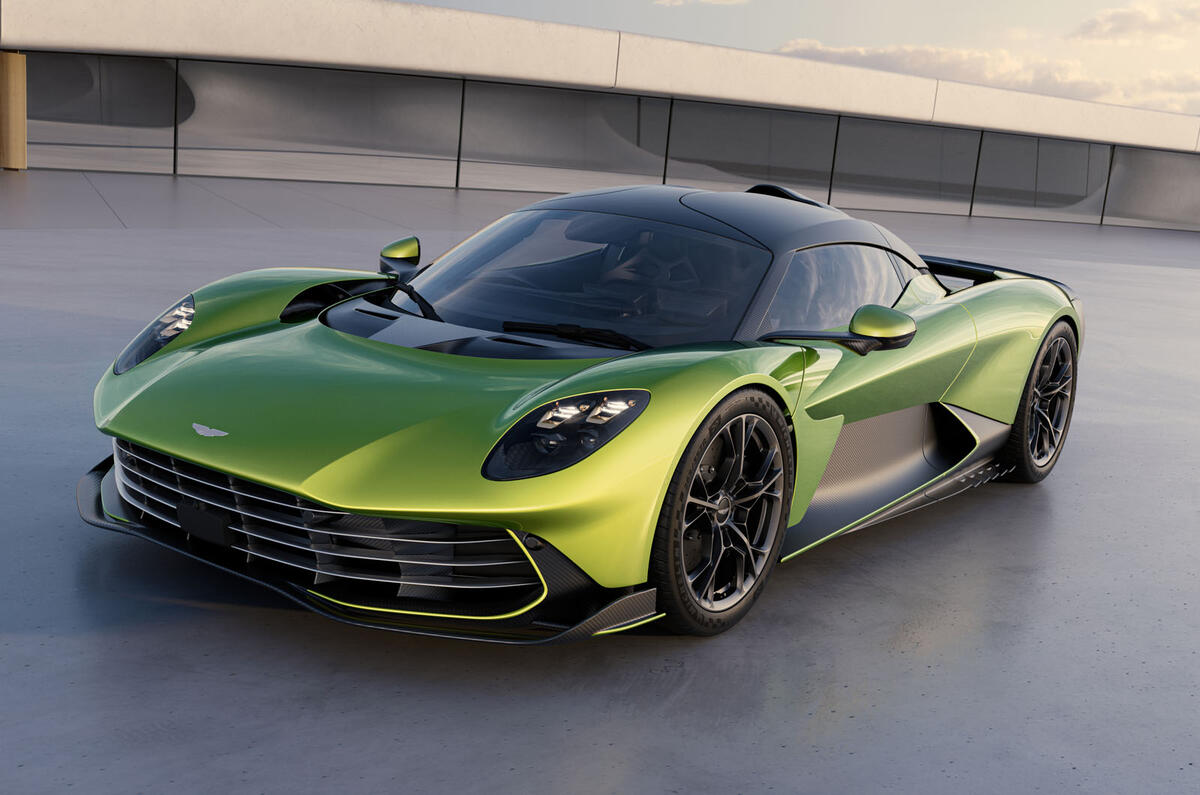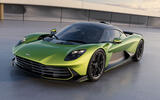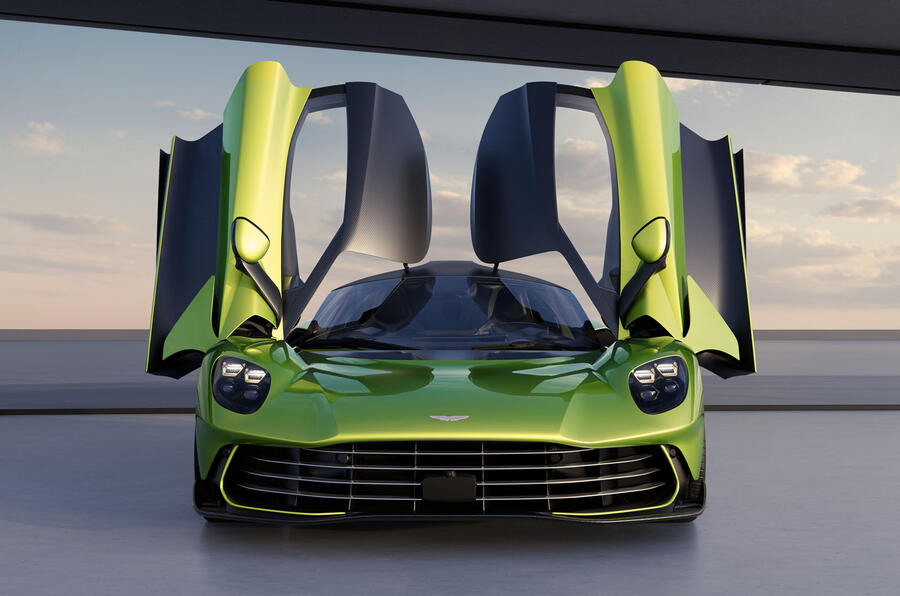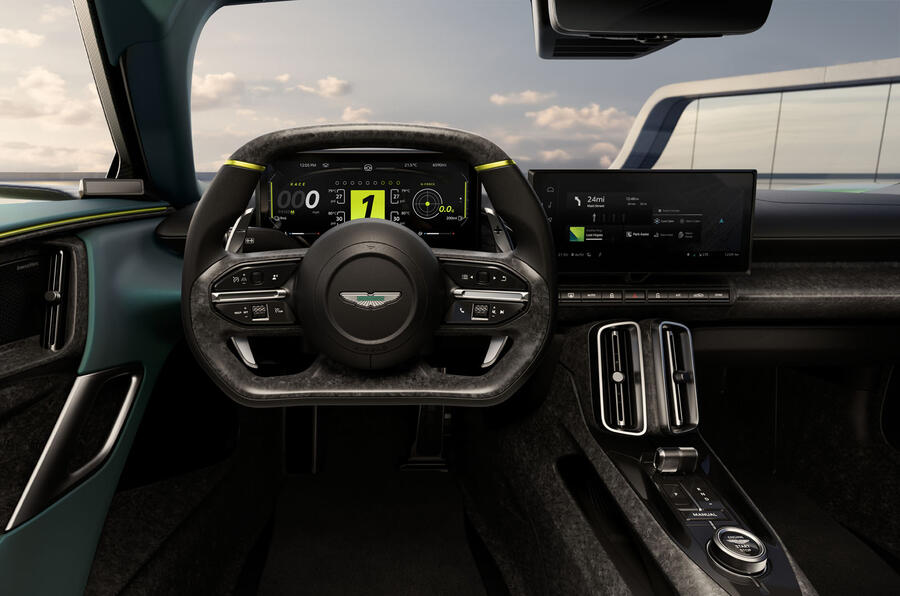Aston Martin's long-awaited Valhalla supercar will enter production in just a few months - with a hefty power advantage over its main rivals.
The firm has released full production specifications for its new mid-engined plug-in hybrid ahead of customer deliveries beginning in the second half of 2025, revealing that it has more power than first promised and the highest torque figure of any Aston Martin model yet.
Early details pegged the Mercedes-sourced hybrid V8's output at 1000bhp, but with homologation now complete, Aston has bumped that figure to 1064bhp to make it more powerful than the Ferrari SF90 and Lamborghini Revuelto. It's only very slightly outpunched by the 1139bhp output of Aston's V12 Valkyrie flagship.
The 4.0-litre AMG flat-plane-crank V8 contributes some 817bhp of that total figure, supplemented by 248bhp from a trio of electric motors - two radial-flux devices on the front axle and a starter-generator in the eight-speed automatic gearbox.

All up, the powertrain puts out a combined 811lb ft of torque - far more than the Valkyrie and well clear of even the likes of the V12 Vulcan track car and the new Vanquish GT.
Officially, the Valhalla will get from 0-62mph in just 2.5sec and top out at an electronically limited 217mph, making it one of the quickest combustion cars on sale.
Just 999 examples of the Valhalla will be built, priced from £850,000 (including VAT), although Aston expects "a huge number" of cars to go through its Q personalisation programme, so some will cost well in excess of that figure.
Aston Martin Valhalla: everything you need to know
Notably, the Valhalla – unlike the 2019 concept which preceded it – is not powered by a bespoke, Aston Martin-developed V6, as was originally planned. Instead, the Valhalla follows the Aston Martin Vantage in adopting a powertrain supplied by technical partner Mercedes-AMG – specifically the performance division's twin-turbocharged 4.0-litre V8, which revs to 7200rpm and drives the rear axle through an all-new bespoke eight-speed dual-clutch automatic gearbox.












































Join the debate
Add your comment
Today this is going against the 296 is completely off the Mark. Especially at that price. This is more the equivalent to the W1 and F80 super cars.
A rival to the 296 and Temerario, and presumably a 750S, but with a hypercar price tag? Even if it was rival to a SF90 and Revuelto, it's still around twice the price of those cars. Are Aston charging that amount because they can?
I would definately say this is going to be more against the W1 and F80, especially when you look at the specs. But way cheaper. It looks stunning though.